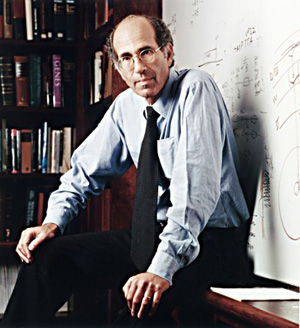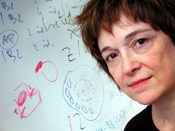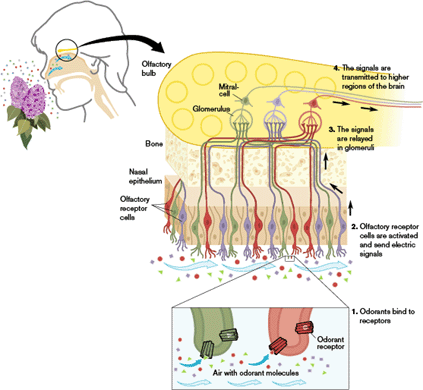While the Chemistry Prize was once again awarded for essentially biological research, albeit of a molecular nature, the Prize for Physiology or Medicine was awarded not for a medical breakthrough but for a scientific discovery that is also underpinned by chemistry.
Richard Axel of the Howard Hughes Medical Institute in Maryland and Columbia University, New York and Linda Buck also of the Howard Hughes Medical Institute and the Fred Hutchinson Cancer Research Center in Seattle carried out research that was certainly nothing to sniff at and resulted in a Prize for their discoveries of odorant receptors and the organization of the olfactory system.

Richard Axel
Exactly how we smell remains something of a mystery. We can after all recognize and recall around 10,000 different odours. Axel and Buck discovered on explanation for our olfactory prowess – a large gene family, comprised of some 1,000 different genes that give rise to an equivalent number of olfactory receptor types and published their seminal paper in 1991. These receptor proteins are located on the olfactory receptor cells lining a small area in the upper part of the nasal epithelium and detect odorant molecules. This startling number of genes represents 3% of our total gene count.
Buck and Axel showed that each olfactory receptor cell expresses a single odorant receptor protein and so there has to be as many types of olfactory receptor cell as there are odorant receptors. However, most odours are not produced by single molecules but by a combination of different chemicals, so that odorant pattern, a mosaic of smell rather than colour is sensed.

Linda Buck
However, our sense of smell may be far more subtle than the simple triggering of receptor proteins as odour molecules come into contact with them. Biophysicist Luca Turin expanded on a theory first put forward in the 1930s that suggested that our olfactory system may work like a spectrometer rather than a one smell-one signal detector system. However, in March this year, researchers at Rockefeller University seemed to blow out Turin’s theory when they could not reproduce his predictions experimentally.

How smells are processed
Further reading
Richard Axel biography
http://www.hhmi.org/research/investigators/axel_bio.html
Richard Axel
http://www.neuroscience.columbia.edu/?page=28&bio=8
Linda Buck profile
http://myprofile.cos.com/lbuck
Linda Buck
http://www.fhcrc.org/research/nobel/buck/
Linda Buck bio
http://www.hhmi.org/research/investigators/buck_bio.html
Rockefeller University news release about smell testing
http://runews.rockefeller.edu/index.php?page=engine&id=53
Blowing the theory of how we smell
https://www.sciencebase.com/elemsmell.html